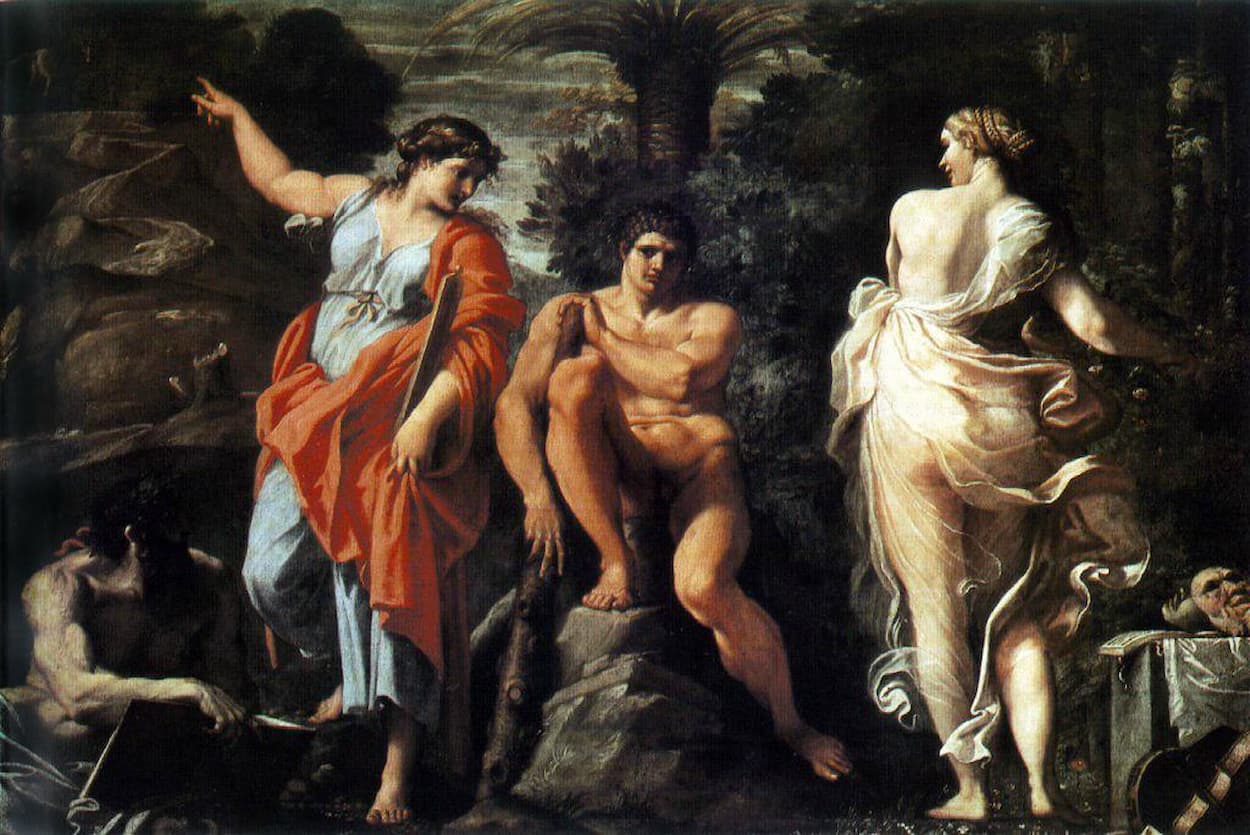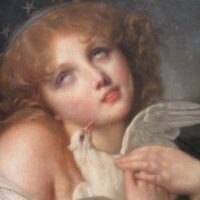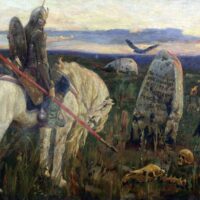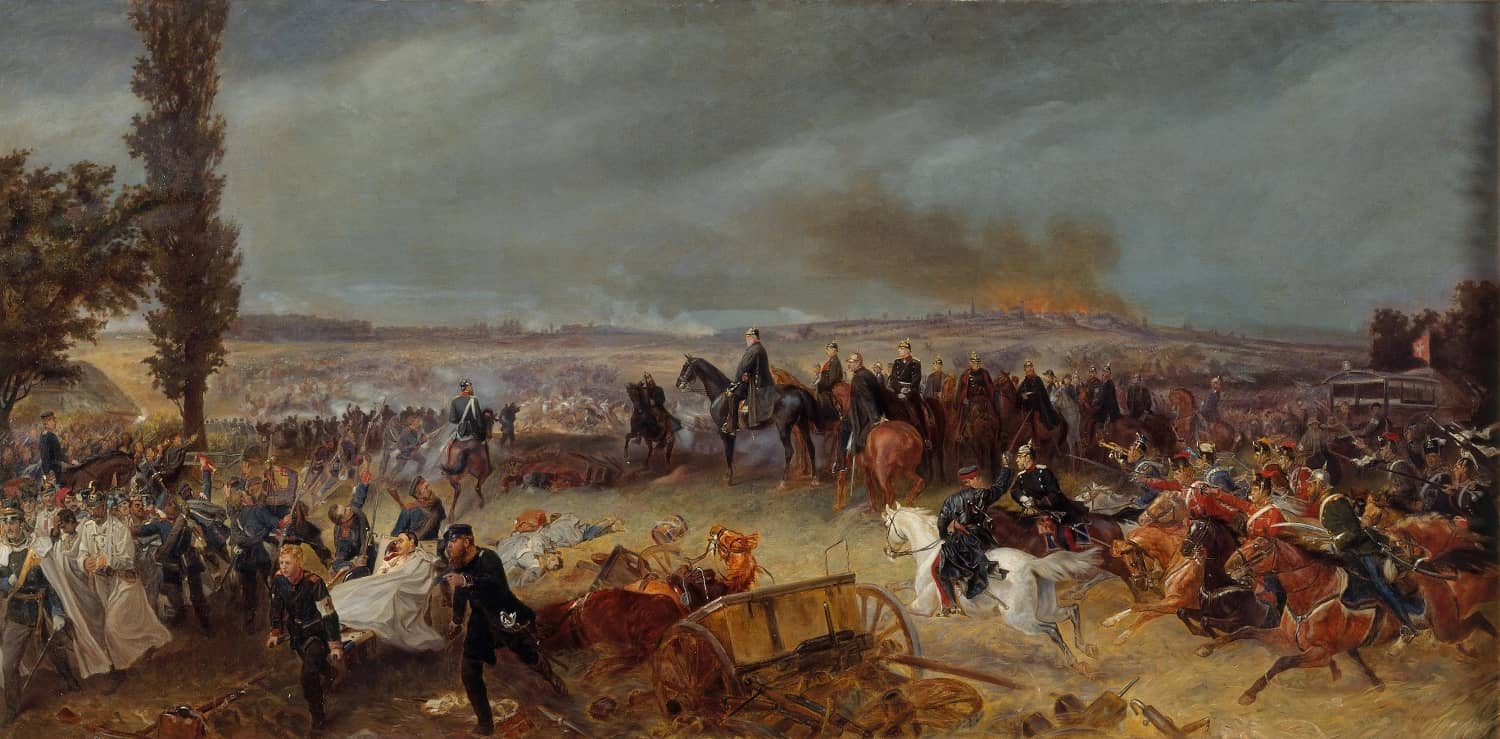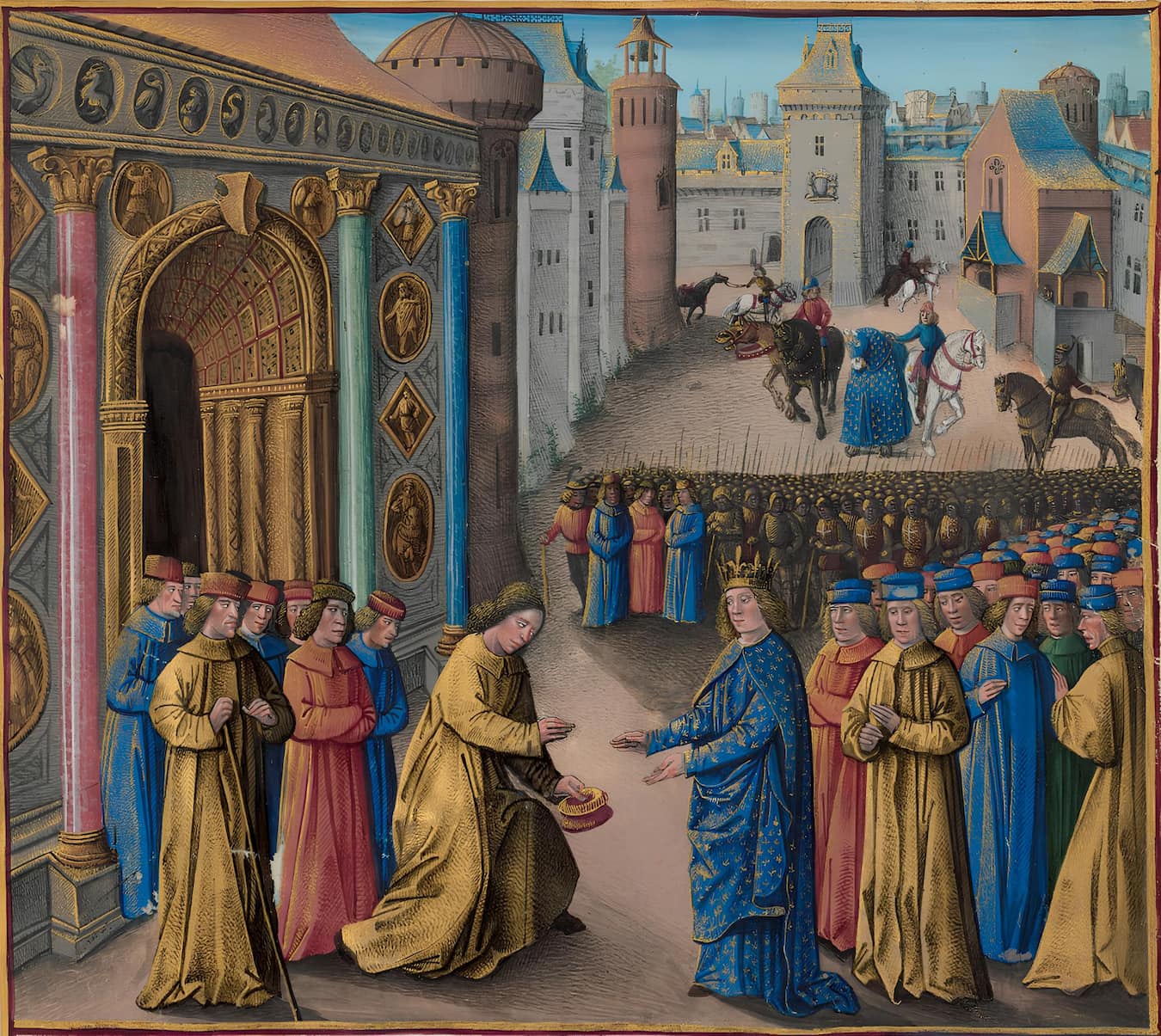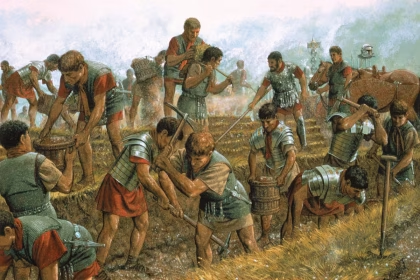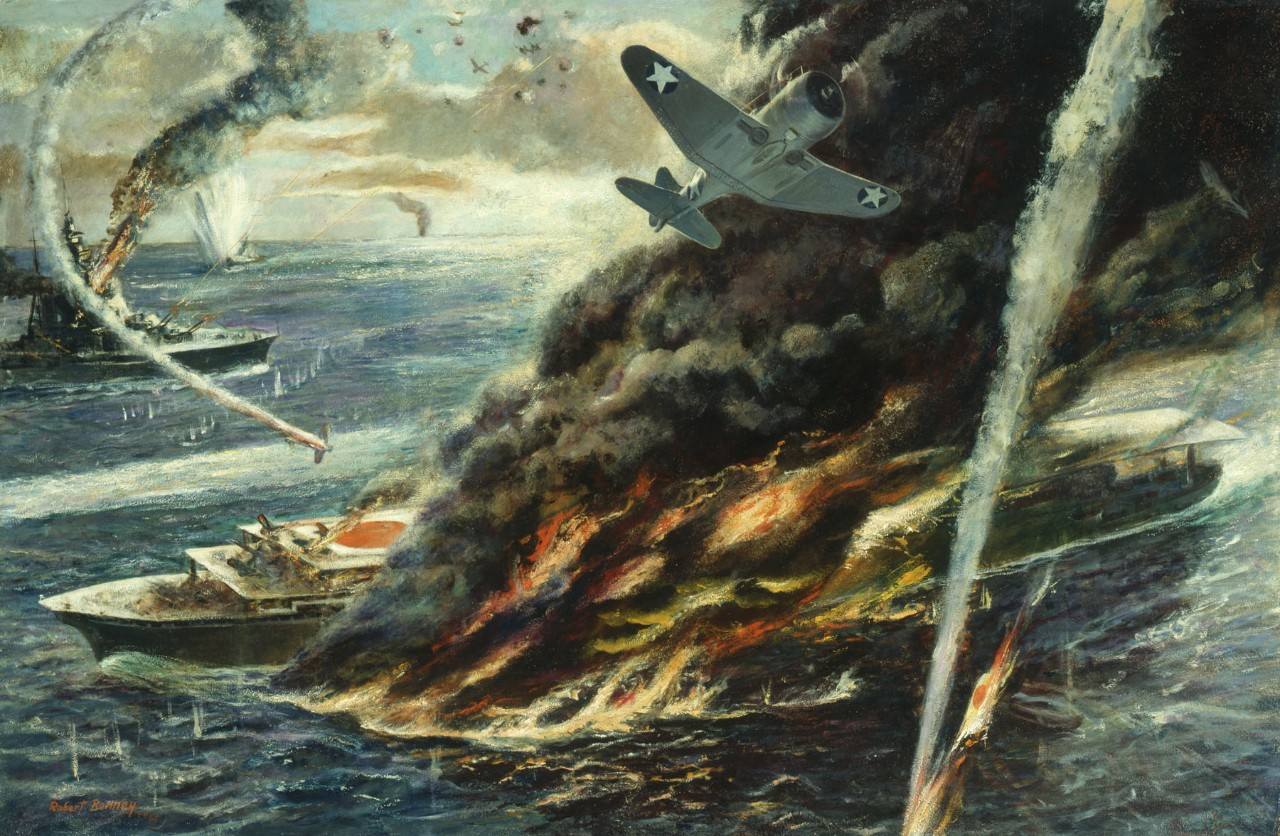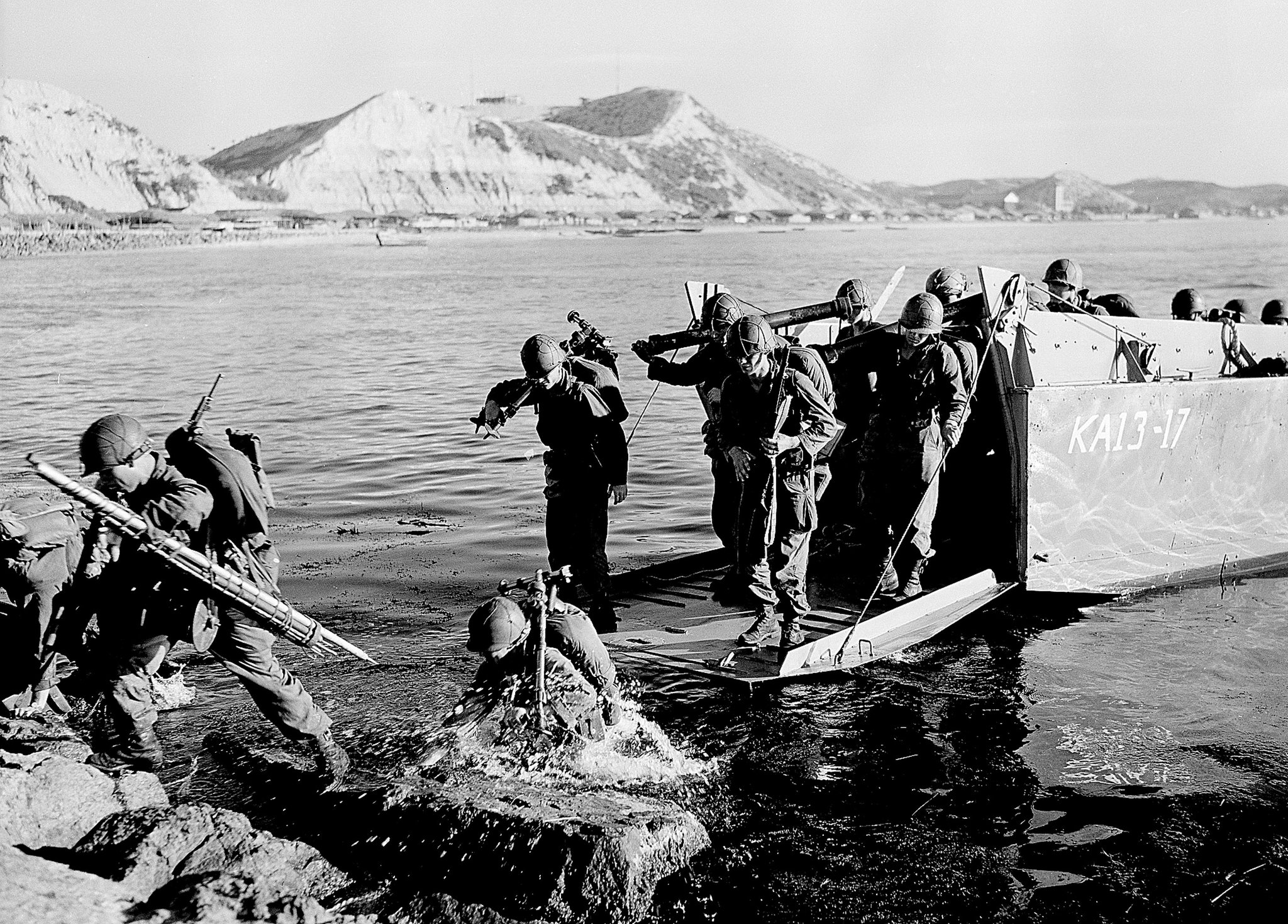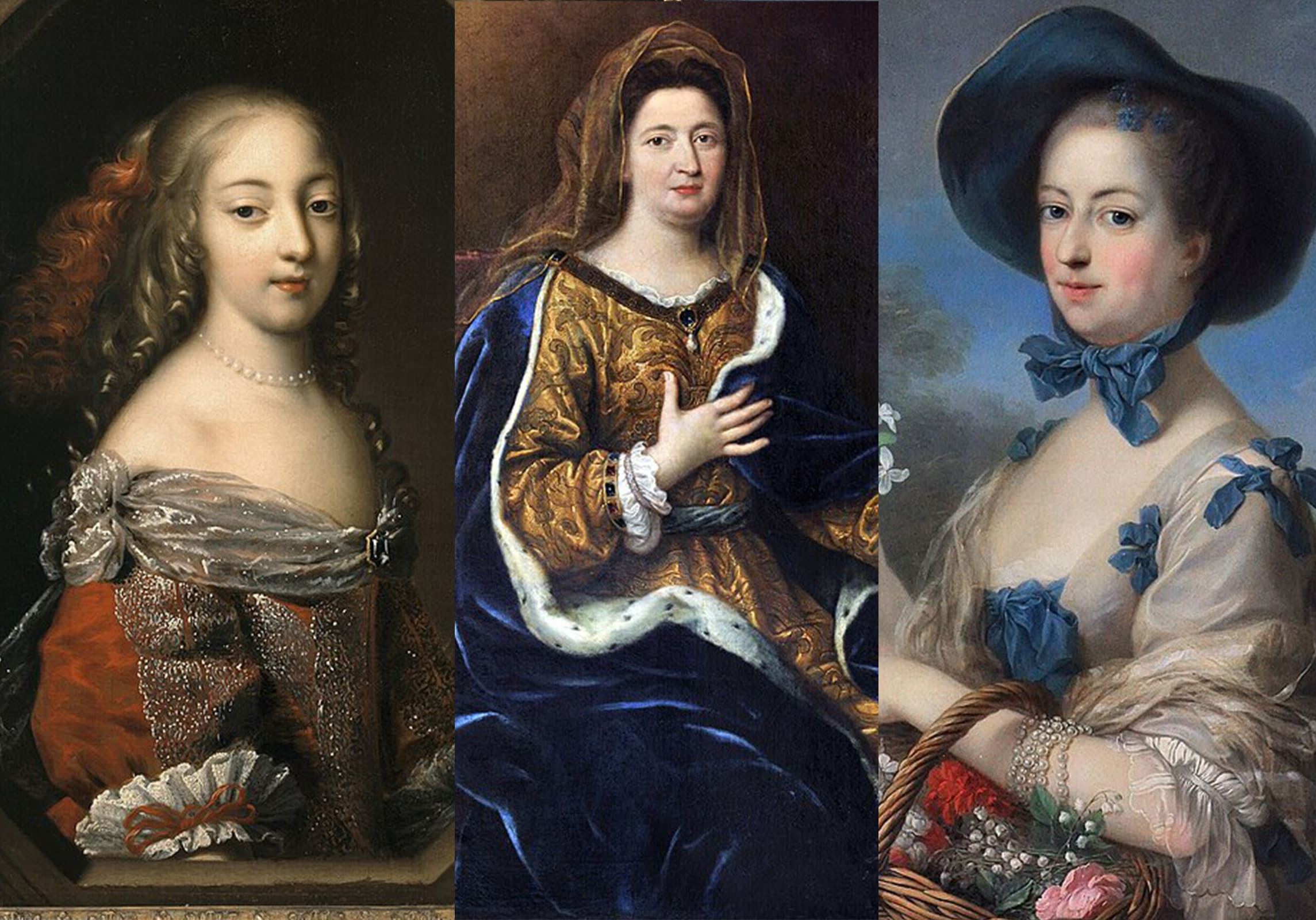Hercules at the Crossroads (Italian Ercole al bivio, Choice of Hercules) — an allegorical plot depicting the hesitations of the ancient hero Hercules between two life destinies — Virtue (Greek αρετε, κακια, Latin virtus), a difficult path leading to glory, and Vice (Greek ηδονή, Latin voluptas), a seemingly easy and attractive path. The expression “Hercules at the crossroads” is applied to a person who struggles to choose between two decisions, one of which is clearly right, while the other is pleasant.
Origins of Iconography
This story was first told by the Greek sophist Prodicus in his speech but has come down to us in the retelling of Socrates, recorded by Xenophon (“Memorabilia of Socrates,” II, 1, 21-34). Prodicus allegorically presented the problem of choice that every person faces at the beginning of their life’s journey, choosing the famous hero as the protagonist of his allegory for greater clarity. An important innovation he introduced into the plot was Prodicus speaking of human free will in choosing one’s life, whereas according to myths, Hercules’ fate was already predetermined by his father at birth — to become a hero.
It should be clarified that this plot is not an ancient Greek myth and does not belong to the list of episodes from the life of Hercules. Although it is placed in a specific period of his life — early service to Eurystheus — it is not justified in ancient sources and is a later invention.
This is further mentioned, in particular, by Cicero in his treatise “On Duties” (I. 118). From a simple episode in Xenophon’s dialogues, the plot, finding parallels in “Scipio’s Dream” from Cicero’s work and Punica by Silius Italicus, where two similar female figures appear, turns into a rich and densely complicated philosophical allegory. Barrell points out that this choice is not just between Virtue and Vice, but between civic, public virtues and personal, private vices (in particular, neglect of civic duty).
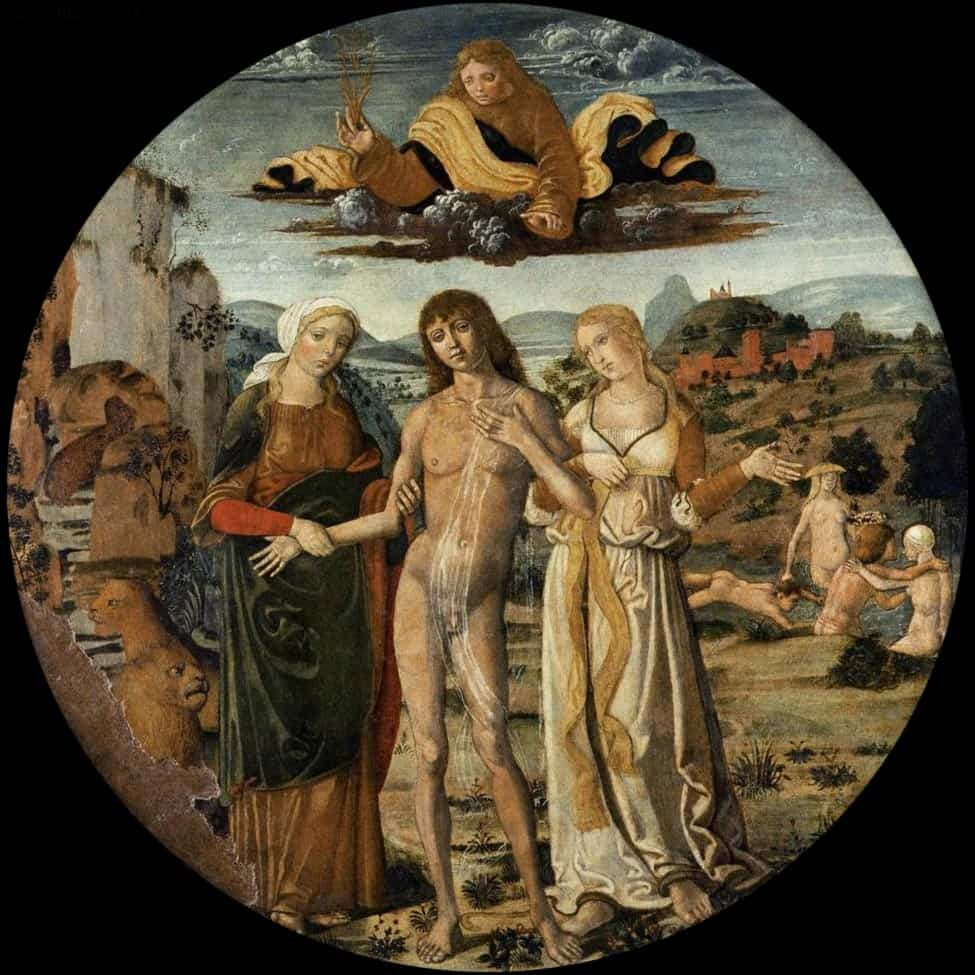
Interpretations and Studies in the Modern Era
In the Renaissance era, Petrarch created the artistic image of a Christianized Hercules, pondering the choice of life path, in his treatise “De vita solitaria.” In the Renaissance era, the choice of Hercules becomes a symbol of spiritual struggle, “psychomachia,” through which the ancient hero evolves into a wandering knight, and finally into an allegory of Christ. Matteo Palmieri (1406-1475) in Libro della vita civile allegorically constructs this choice as oscillations between active prudentia (prudence, primary satisfaction of daily bodily needs) and contemplative sapientia (highest wisdom, born in solitude through reflection on unearthly, higher, divine matters, “heroic melancholy”).
Sebastian Brant in his “Ship of Fools” describes a fool who, unlike Hercules, cannot make the right choice between two roads; also in 1512-13, a play titled “Tugent Spyl” (“The Play of Virtue”) was written on the same subject, published in 1554.
The plot was widely known in the Renaissance, particularly because this ancient Greek text was a classic translation exercise in textbooks. It is often mentioned in Britain. Thomas Bradshaw in “The Shepherds Star” (1591) presents a simplified version of the Choice of Hercules. It is also worth mentioning Ben Jonson’s work “Pleasure reconciled to Virtue” (1619). The Earl of Shaftesbury in 1713 published “Noticion of the historical draught, or Tablature of the Judgment of Hercules…”: it included instructions to the artist Paolo di Matteis, whom he commissioned to paint a picture on this subject (however, it is considered that the artist did not follow them very closely). This text on art emerged in polemics with French artists and theorists, was widely circulated, and was translated into many languages. Robert Dodsley in 1775 published the poem “The Choice of Hercules.”
Erwin Panofsky shed light on the importance of this plot for the art of the 16th-17th centuries in his work “Hercules am Scheidewege” (1930), while Edgar Wind (“Pagan misteries in the Renaissance,” 1967) analyzed this theme in more detail. The connection with Petrarch was explored by Theodor Mommsen in his article “Petrarch and the Story of the Choice of Hercules.” Ludwig Tieck in his “Poetisches Journal,” Jena, 1800, published his play “Der neue Hercules am Scheidewege” (The New Hercules at the Crossroads), which in his collected works bears the title “Author.”
In 1974, the Dutch poet Hans Warren published a poem on this subject.
Description
The hero is usually depicted sitting under a tree. Before him stand two female figures, between whom he must make a choice (cf. the Judgment of Paris). The woman on the right usually personifies Virtue, while the one on the left personifies Vice (sometimes, usually in literary texts, they may embody Athena and Aphrodite/Circe). As the plot goes on, both women present him with enticing pictures of different characters, and Hercules chooses the first of them, (although in the paintings of the late Baroque period, there may be some initial inclination towards vice).
The figure of Virtue is usually dressed, while Vice is naked or has an exposed chest. Vice (Licentiousness) may have the following attributes: a satyr’s panpipe, a tambourine, masks — symbols of deception, playing cards — a symbol of idleness, a whip and shackles — symbols of punishment. Next to Virtue, there may stand a person with a laurel wreath and a book (a poet who will sing the hero), she may be personified as Minerva in military armor and corresponding attributes — Vice, thus, is personified in the likeness of Venus. Above Minerva, Fame may trumpet (or crown the hero with a wreath), or Father Time may gaze from above (symbolizing that the hero will be remembered forever).
Behind the allegorical female figures, landscapes illustrating the plot may unfold. The Path of Virtue is a narrow rocky path leading up to a mountain plateau. There may stand Pegasus (a symbol of glory). The Path of Vice is an easily accessible road leading to sun-drenched valleys with bathing pools where naked people splash about.
In ancient times, this plot, apparently, was not illustrated, but it became very popular in the Renaissance and Baroque eras. Hercules, according to the text, is usually depicted as young and beardless, and may even serve as an allegorical portrait of some distinguished patron or even a self-portrait. There are reworkings of the plot, where not only Hercules is replaced, but also the two alternative paths between which he must choose — for example, Joshua Reynolds made the great actor Garrick hesitate between two theatrical genres, and Angelica Kauffman painted her self-portrait, choosing between two liberal arts (however, the fact that she painted a self-portrait, not a cantata, clearly indicates her life choice).


